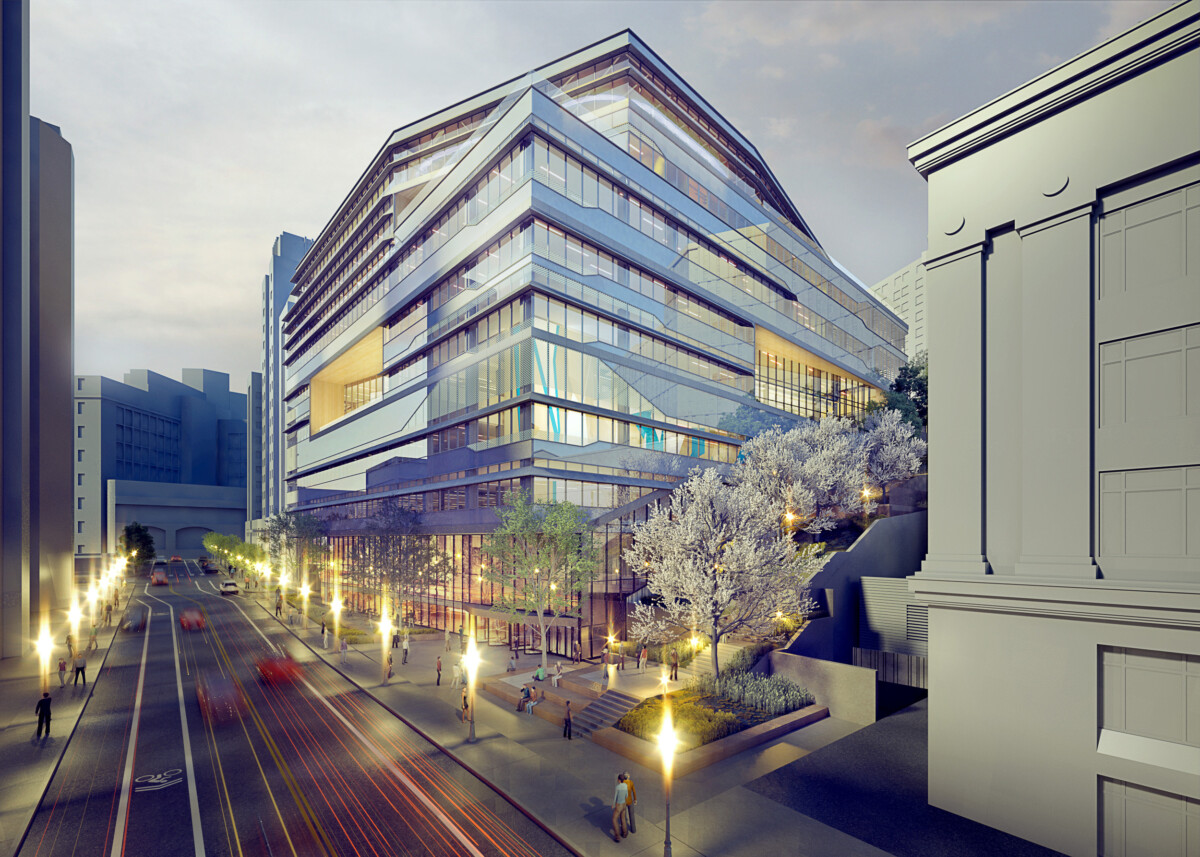A Unique Collaboration: The University of Pittsburgh Recreation Center

It’s not exactly MTV’s “Real World,” but the team assembled to design the University of Pittsburgh’s state-of-the-art center for fitness, well-being and recreation jokingly refers to itself as the “Real World Pittsburgh.”
Just as the TV show’s participants were thrust together in close living quarters to deal with the unexpected, partners in the Moody Nolan-led project say fast-moving developments present daily challenges and opportunities.
“It’s a unique project on a unique site,” says Sara Boyer, Senior Project Architect and Associate Project Manager. “It’s built into a hillside and must function as the crossroads of the campus. Anyone going from one side of the campus to the other will pass through the facility. It’s a complicated project. There’s not another one like it in the world.”
The 300,000-square-foot center represents the first major construction project on Pitt’s Oakland campus in years. The center must accommodate academic, food service, and fitness and recreation functions, while embracing and working to further Pitt’s leadership in sustainability. Considered a lynchpin of the university’s master plan, it is seen as transformational.
And that calls for a transformational way to approach collaborations, says Brian Sell, Senior Project Designer.
“Because of the complexity of the project, we are working with 18 consultants, in addition to the construction manager and the university,” he explains. “The size of the group requires an integrated design process that demands collaboration. It’s not about us sketching something and a partner, such as Arup, then engineering the building systems around it. We are iterating the design together, real time.”
Technology and Moody Nolan’s management approach make that possible, says Boyer, who called project teamwork an organic process marked by fluid dialog. The team, whose members sit in six different cities and in Ireland, convene each month for a virtual workshop with the client. The first day focuses on design, the second on technology and engineering.
Using various 3D modeling software programs, all of the consultants are implementing integrating design processes. The software and communication tools are also facilitating client communication and understanding of this complex project. Multiple software platforms integrating via cloud are providing real-time information and informing design decisions.
“We always start by reminding the team about the university-set design drivers,” Sell says. “That way, everyone is clear about reasons for doing something. Then, our conversations are not about preset notions, but about what’s best for the project. When every member of the team can accept the reasoning, everybody has ownership.”
“I like to call it a ‘collaborapalooza,’” Sell says. “In the end, it allows us to collaborate more efficiently. It builds professional relationships that make working together easier. And it allows us more time to design.”
Moody Nolan joined the project in November 2018. Construction is expected to begin this spring and finish in fall 2023